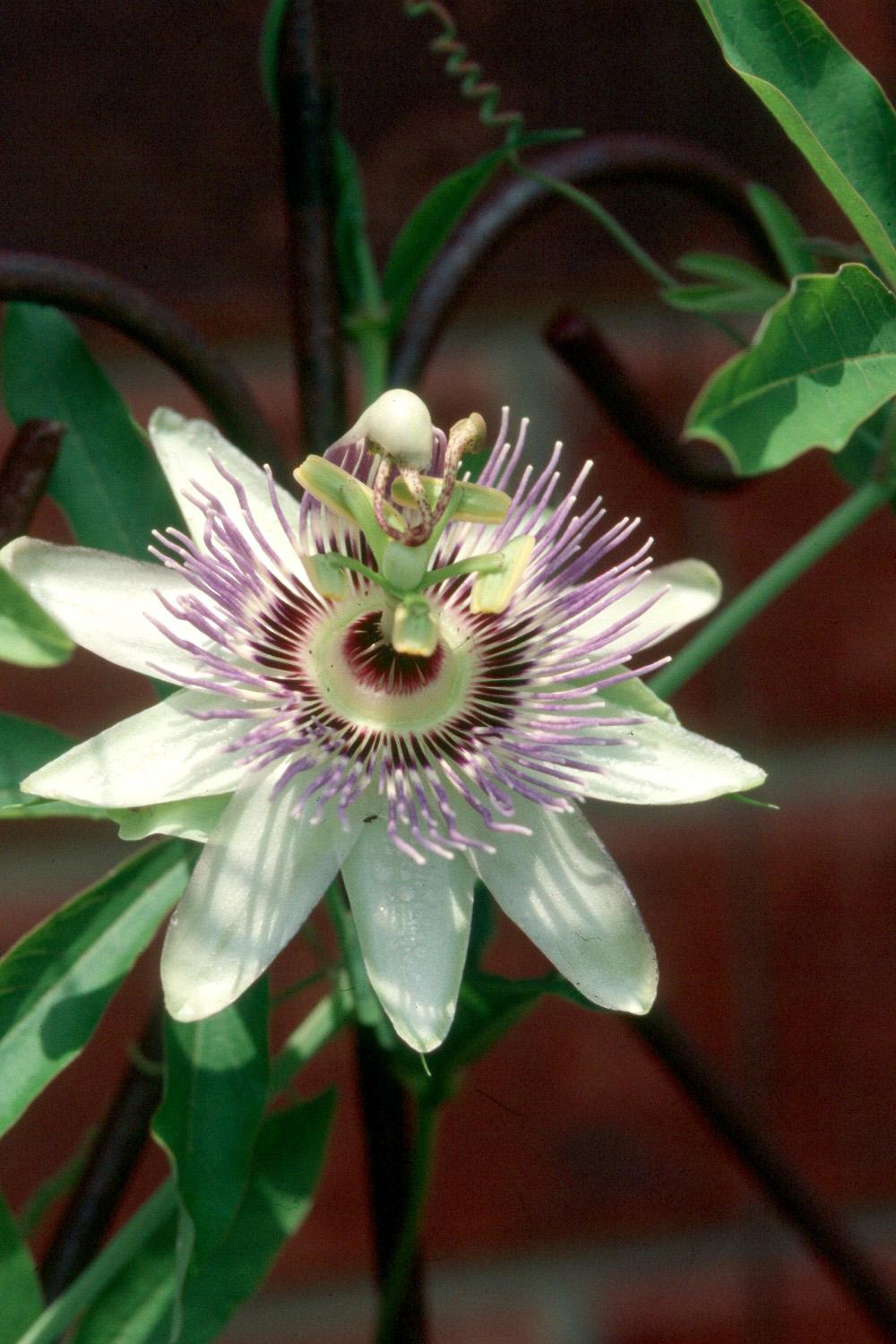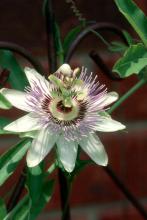Information Possibly Outdated
The information presented on this page was originally released on August 11, 2005. It may not be outdated, but please search our site for more current information. If you plan to quote or reference this information in a publication, please check with the Extension specialist or author before proceeding.
Blue Passionflower is cold hardy, tropical
By Norman Winter
MSU Horticulturist
Central Mississippi Research & Extension Center
To say that blue passionflower is a vigorous vine is a huge understatement, and the flower production is also very impressive. The blue passionflower is known botanically as Passiflora caerulea and is cold hardy over the entire state.
A couple of years ago, I purchased a blue passionflower from one of our local nurseries, and mine has been evergreen through two winters. I spoke with a tropical plant nut like myself in Atlanta, and he confirmed that his also was evergreen. It will die to the ground in colder climates and return in spring.
The blue passionflower is native to Brazil and Argentina and offers a long blooming season from late spring through fall. Although called blue, it actually has white petals and scores of attractive blue filaments.
The name passionflower is one other note of interest. The flowers of passion vines are associated with the crucifixion of Jesus Christ, especially in Latin countries. The five sepals and five petals are said to represent the apostles minus Judas, who betrayed Jesus, and Peter, who denied Jesus.
The five stamens represent the five wounds Jesus received (one each in his hands and feet and the piercing of his side by a spear), the stigmas represent the three nails used to nail Jesus to the cross, and the corona of numerous filaments is said to represent the crown of thorns. Certain tropical species possess foliage marked by silvery-green rounded variegations, and these are said to represent the coins of silver for which Judas betrayed Jesus.
If you are searching for a special vine for a fence, trellis or arbor, then you must consider the blue passionflower. Know that passion vines require good drainage and plenty of sunlight to be prolific bloomers. Provide a good support structure and keep well mulched. A light application of fertilizer in late spring and mid-summer keeps the foliage looking its best.
Depending on your disposition, there might be one drawback to the passion vine. The native Gulf Coast Fritillary butterfly with its beautiful orange wings likes the passion vine as a host plant. In other words, their larvae will munch on a few leaves, but you will be rewarded with more butterflies.
No doubt you have had a fruit drink or snow cone with the juice from the tropical passionflower, Passiflora edulis. While we can't grow this one, the blue passionflower and several other cold hardy varieties will produce edible fruit.
The native passion vine, known by the common names of apricot vine, maypop and wild passionflower, has three-lobed leaves. The blue passionflower has mostly five-lobed leaves ranging to as many as nine on occasion.
Many think the red passionflower is the most beautiful. The red varieties Passiflora coccinea and Passiflora vitifolia both have started showing up at garden centers the past few years. These are not nearly as cold hardy as the others and will need good protection and mulch to entice them to return in the southern part of the state.
The tropical look is still hot all across the country, and you have to admit we are pretty lucky to be able to grow such exotic vines as the passionflower that will enhance this style of garden yet return year after year.



